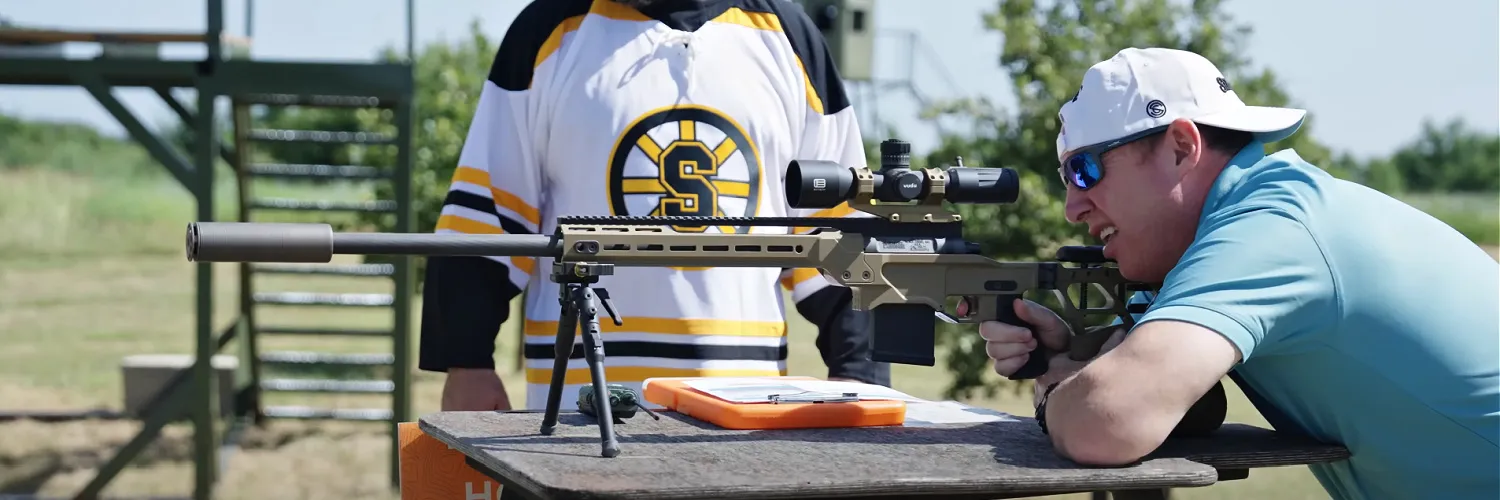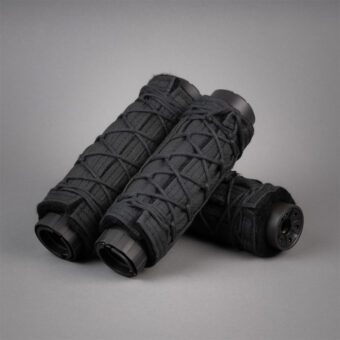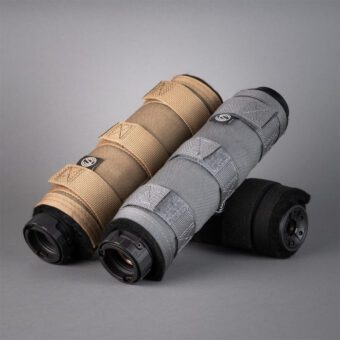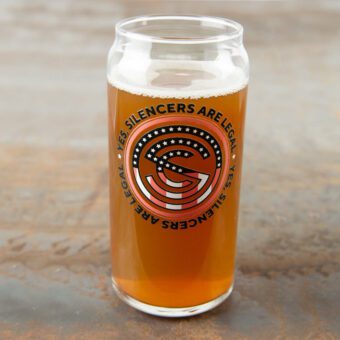Suppressor Terminology: Everything You Need to Know
SiCo Writer
The world of sound suppressors is both complicated and very simple; how suppressors function isn’t rocket science, but much of the nomenclature surrounding them can be very confusing for new shooters. This is a shame since adding a suppressor to your favorite firearm significantly increases its enjoyability.
That’s why we’re here to walk you through everything you need to know about suppressors and the particular language that surrounds them.
Common Suppressor Terms and Why They Matter
All Suppressors can be divided into three categories based on how they’re attached or
“mounted” to a host firearm.
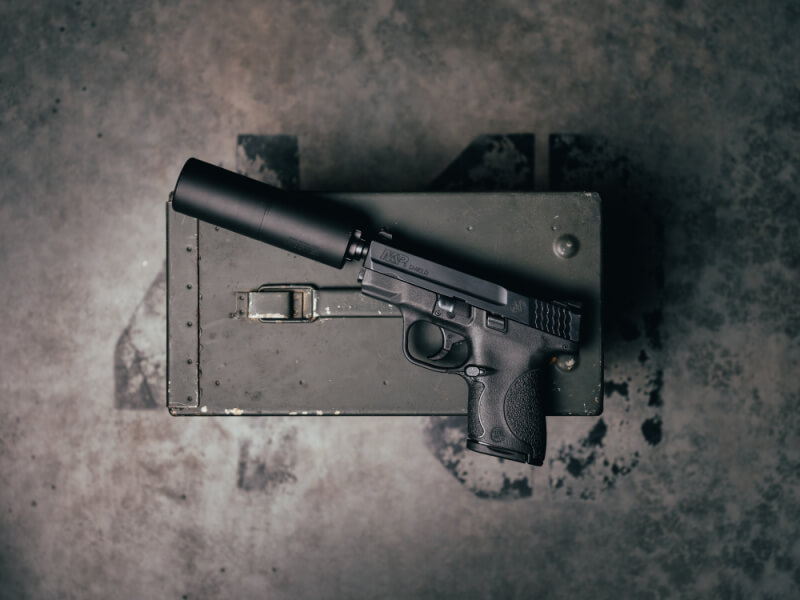
Direct Thread
The suppressor features female threading that screws onto the male threads on the end of a firearm’s barrel. Historically, this is the most secure and simplest way to attach a
suppressor to a firearm.
A shooter removes the original muzzle device — likely a muzzle brake, flash suppressor, or thread protector — and replaces it with a sound suppressor. Additionally, many of the Alpha series of SilencerCo mounts utilize a piston that directly threads onto a given firearm.
With all Direct Thread suppressors, it’s important to make sure that the thread pitch, or measurement of how many rotations within a given distance the threads run, matches up between the device and the host firearm to ensure safe function. Equally as important is to make sure the host firearm’s caliber is compatible with the suppressor in question. This information is available in the user’s manual of the suppressor and generally on the firearm manufacturer’s website.
All SilencerCo pistons have this information engraved on them, but often times the desired host gun does not. In these instances, check the owner’s manual, and if that doesn’t contain the information, call their customer service line, and they will certainly have that information available.
Lastly, are the cutting-edge SilencerCo (TOM) Thread Over Mounts – a game-changer for all you suppressor aficionados out there! Designed to deliver swift and hassle-free attachment and detachment, these are the perfect match for the TOMD Compact Radial Brake.
By ingeniously fusing the convenience of ASR Mounts with the simplicity of Direct Thread Mounts, this system is poised to revolutionize your suppressor experience. Just screw on the Thread Over Mount atop the Radial Brake, and voilà! Your suppressor effortlessly finds its rightful place at the end of your trusty rifle.
No fuss, no muss – its elegance redefined for your everyday suppressor mounting needs.
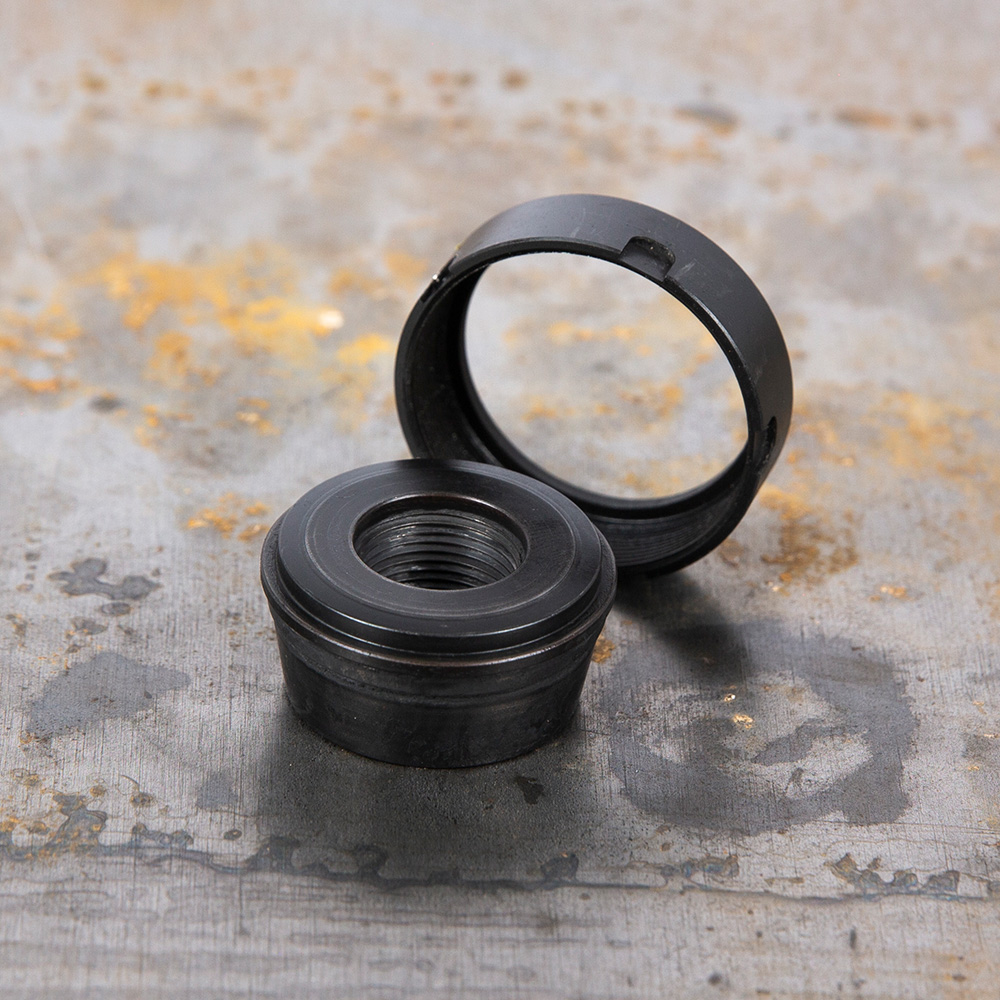
Quick Detach
Quick Detach or “QD” suppressors like the SilencerCo Bravo and Charlie mounts allow shooters to install or remove a suppressor from a host firearm quickly (hence the name).
Most of these function by replacing the host firearm’s muzzle device with a proprietary one that directly interfaces with the suppressor. These are useful for shooters with multiple guns with different thread pitches who want to mount the same suppressor.
A great example of this is the ASR or Active Spring Retention system offered by SilencerCo. This mounting system is a hybrid of Direct Thread and Quick Detach, where the ASR muzzle device features threads on it that thread directly into the suppressor itself.
Unlike traditional Direct Thread mounts, the threads on the ASR mount are longer and less fine — which translates into a more rugged mount that takes fewer rotations (and thus, time) to secure to a firearm.
After being tightened onto the suppressor, a small ring at the base of the suppressor is rotated roughly 45 degrees to secure it against vibration and loosening. This is especially handy, as the shooter doesn’t need a special wrench to attach or remove the suppressor.
One exception to the rule is the “Tri-Lug” or “3-Lug” mount found on many Heckler and Koch pistol-caliber firearms like the MP5 submachine gun. These forgo an aftermarket muzzle device and function using a camming, spring-loaded retention mount.
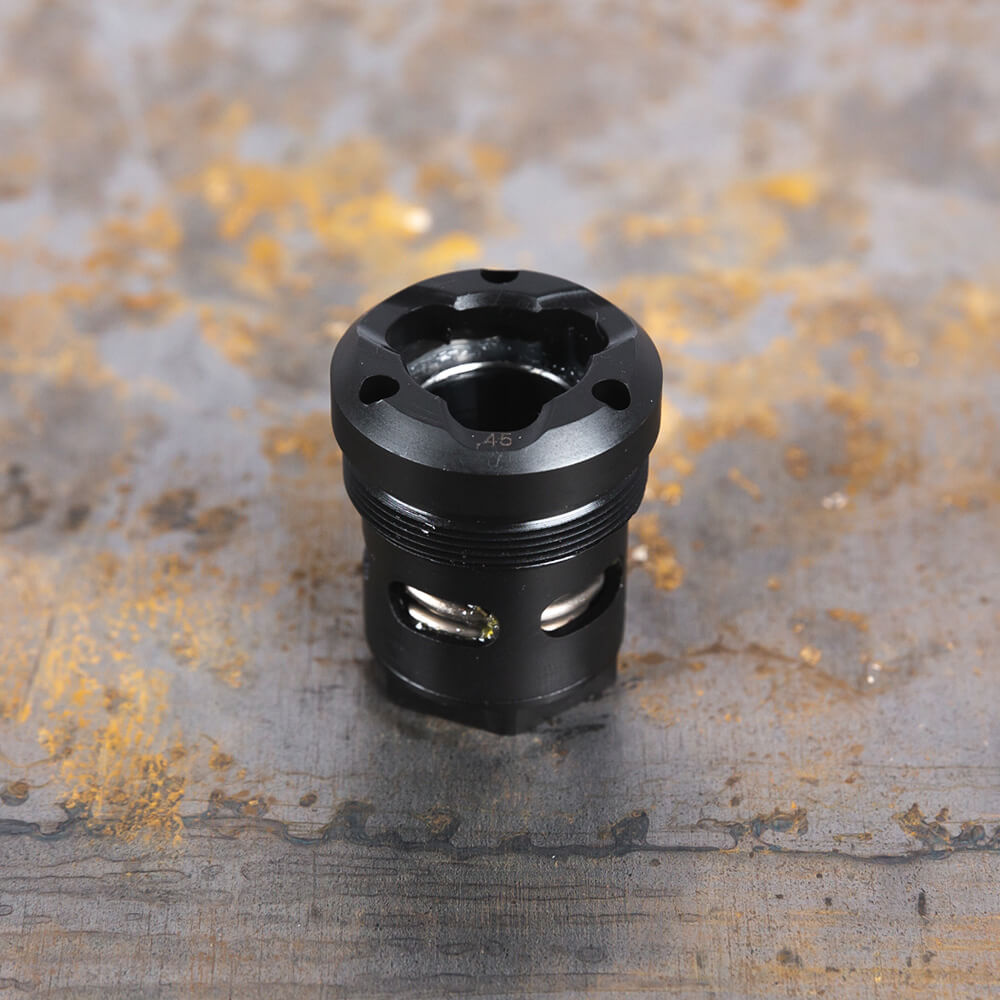
Integral
The final and arguably most effective suppressors are “integral” or built-in suppressors. As the name suggests, these suppressors are part of the host firearm, like the SilencerCo Maxim 9.
Depending on the design, these suppressors either partially or totally encapsulate the host firearm’s barrel and provide excellent noise reduction at the expense of modularity. They may only be good for suppressing one firearm, but they do so exceptionally well.
Alpha, Bravo, Charlie, Delta - Do You Read Me?
When it comes to SilencerCo brand suppressors, the mounting options instantly tell a shooter a great deal about the suppressor and the type of host firearms it should be installed on.
SilencerCo mounting systems are named according to the Greek alphabet. The Alpha, Bravo, Charlie, and Delta mounts each have unique threads that connect to the suppressor. This means that each suppressor is only compatible with one of the four mounting systems, making it essential to pay attention to your suppressor’s threads. SilencerCo offers each suppressor with multiple thread options, allowing your firearm to be paired with the suppressor based on caliber. The mount serves as a bridge, connecting the threads on the barrel to the threads of the suppressor.
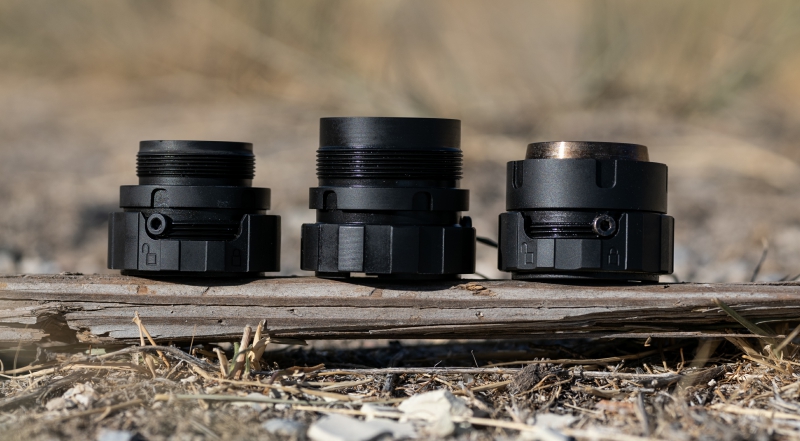
Alpha Mounts
Options: Alpha Direct Thread Mounts, ASR Mounts, Piston, and 3-Lug.
Use: Most commonly used for pistol and pistol caliber suppressors.
Suppressors:
- Octane Series
- Omega K Series
- Osprey 2.0
Bravo Mounts
Options: Bravo Direct Thread Mounts, ASR Mounts, and Pistons & 3 Lug with use of the Bravo Piston Mount (Hybrid 46 only)
Use: This is the most common mount system available. First introduced with the SilencerCo Omega 300, most suppressor manufacturers have adopted this system as industry standard.
Suppressors:
- Harvester Evo
- Omega 300
- Hybrid 46
- Scythe-Ti
Charlie Mounts
Options: Charlie Direct Thread Mounts, ASR Mounts, and Pistons & 3-Lug with the use of the Charlie Piston Mount (Omega 36M and Hybrid 46M only).
Use: The Charlie system is a high performance system that performs equally as well as the Bravo system and is more often used for AR-15 and AR-10 builds.
Suppressors:
- Omega 36M
- Hybrid 46M
- Saker ASR
- Chimera 300
- Velos LBP
Delta Adapters
Use: These adapters act as a direct thread mount for rimfire suppressors.
Suppressors:
- Warlock 22
- Sparrow 22
- Switchback 22
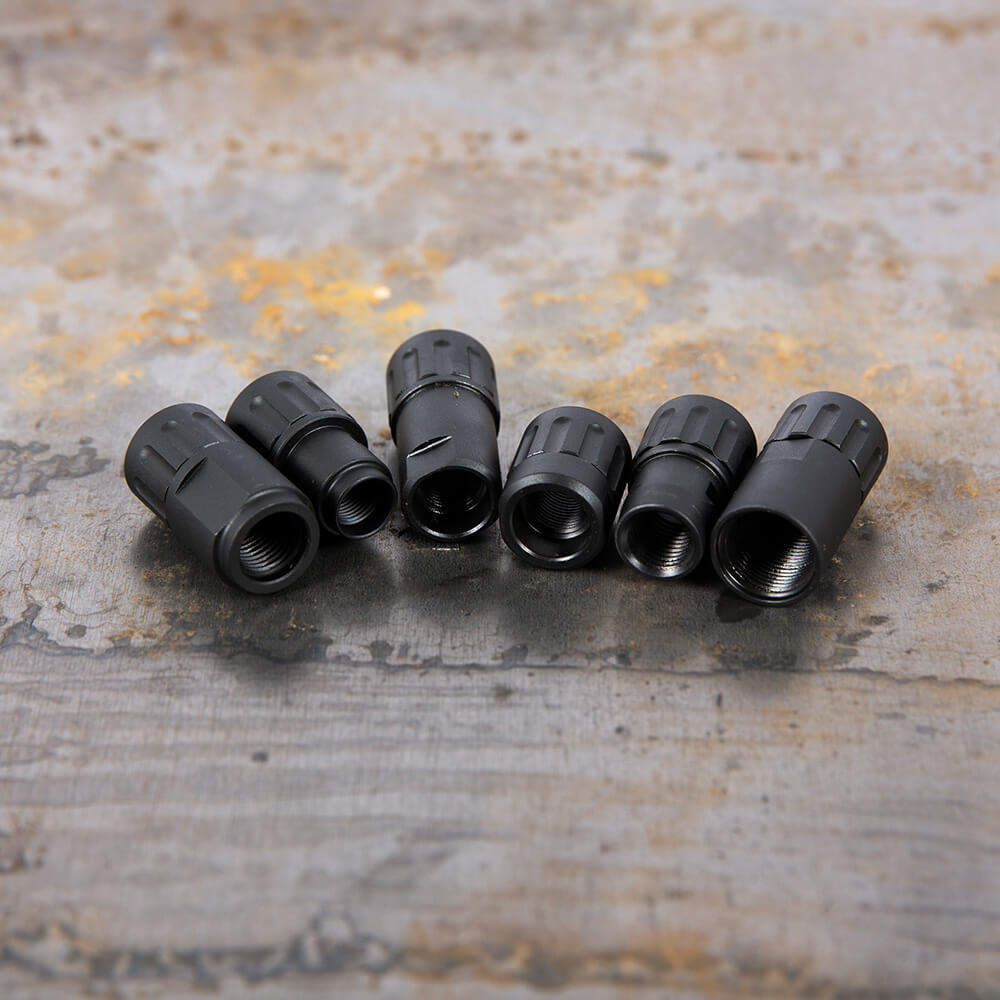
Echo Choke Adapters
Use: These adapters act as direct thread mounts for shotgun suppressors, while also allowing the user to change the spread pattern.
Suppressors:
- Salvo 12
What are pistons?
Pistons are caliber-specific/thread-pitch-specific mounts that allow either a fixed spacer or a Nielson device, AKA booster, to be installed. These differ from QD mounts and standard Direct Thread mounts in that they are necessary for certain pistol suppressors to function reliably on handguns with a moving barrel.
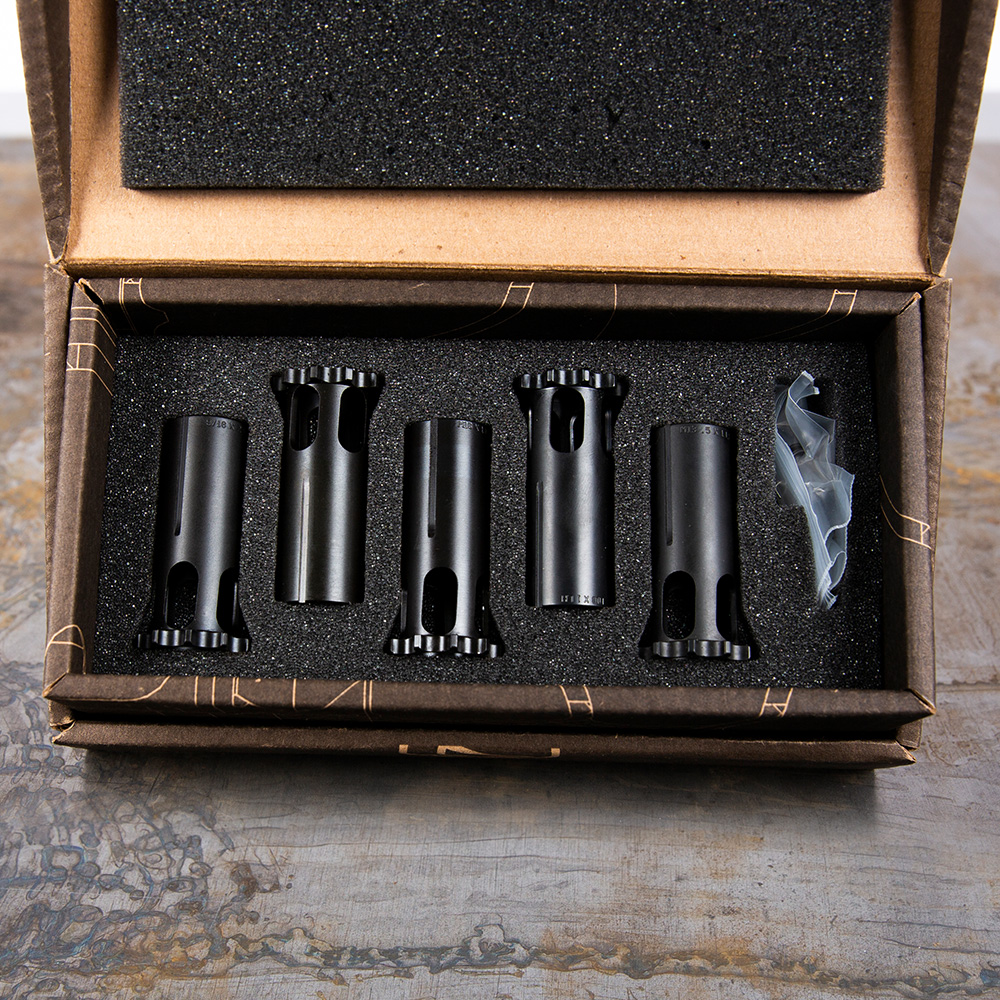
Suppressor vs. Silencer vs. Can
You have probably heard people refer to sound-suppressing devices as a silencer, suppressor, or even “can.” In the common parlance, these words all effectively mean the same thing — a device that reduces the volume of a gunshot by slowing the release of hot gasses escaping from the muzzle of a firearm when fired.
Yes, the term Silencer is a bit of a misnomer because no sound suppressor on Earth can actually silence a gunshot. But the reason that term became so widely used is the same reason some call any carbonated sweet beverage a Coke — the first well-known example of a sound suppressor was called the “Maxim Silencer” by the manufacturer. Props to Hiram Maxim; that is an excellent marketing ploy!
But what about cans? Well, the term “can” came into use somewhat recently as slang for a suppressor, presumably because most sound suppressors are metal cylindrical objects that resemble beverage cans. Plus, if we’re being honest, “Toss a can on that M4!” sounds cooler than “Install a sound suppressor on that firearm!”
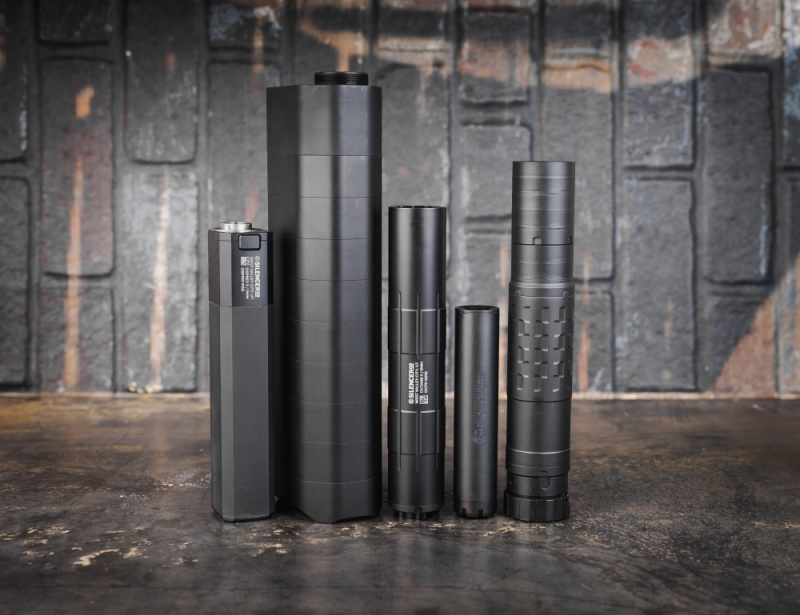
The ATF
One aspect of suppressor ownership is dealing with the Beareau of Alcohol, Tobaco, Firearms and Explosives (ATF). But contrary to what you might read on the internet, the process isn’t all that bad.
Suppressors are regulated by the National Firearms Act of 1934 (NFA) and, as such, require ATF approval and a $200 tax ‘stamp’ for an individual to possess. To file for approval and pay said tax, you’ll need to file either a Form 4 or an eForm 4. These are relatively straightforward forms that can be filled out at home or at a NFA dealer’s shop.
In either case, once the information is sent along with payment, the wait for ATF approval could take anywhere from six to ten months, depending on the volume of applications in the system at that time. At this point, you need only wait for a phone call from your dealer that your suppressor has been approved to pick it up.



